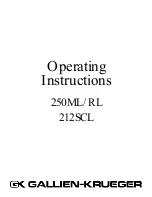
Keysight WLAN Measurement Guide 107
Concepts
WLAN Measurement Concepts
WLAN Measurement Concepts
There are a number of different ways to measure the quality of a digitally
modulated signal. These usually involve precision demodulation of the
transmitted signal and comparison of this transmitted signal with a
mathematically generated ideal or reference signal.
Channel Power Measurement Concepts
Purpose
The Channel Power measurement is used to find the total power presented in a
specified bandwidth. This procedure also measures the power spectral density
(the peak power on 1 MHz integration bandwidth). This measurement is
applied to design, characterize, evaluate, and verify transmitters and their
components.
Measurement Method
This measurement will include the following functionality:
— Averaging
— Flexibility for measuring any signal bandwidth
— Storage of a .CSV file to disk
— Integration BW markers
— Auto reference level setting key
— Root-Raised Cosine filter with user settable
α
and filter bandwidth
— Ability to turn the Root-Raised Cosine filter on or off
The Channel Power measurement uses Integration Bandwidth (IBW) method
to calculate signal channel power. When the Channel Power measurement is
activated, the appropriate integration bandwidth is set according to the
selected radio standard. The power in the integration bandwidth is measured
and reported along with the computed power spectral density. The peak power
spectral density is defined as the maximum channel power in 1 MHz
bandwidth.
The IBW method uses a swept spectrum as the basis for the calculation and
select an appropriate RBW filter. If the RBW filter is too narrow, not all of the
signal power will be measured. If the RBW filter is too wide, it will reduce the
measurement accuracy.
The measurement integrates the linear trace power from (Center Freq - Integ
BW/2) to (Center Freq + Integ BW/2) by considering the equivalent noise
bandwidth and uses linear interpolation to calculate the residual lower and
upper edge power of the integration bandwidth within the width of a sweep
point (the span divided by the number of sweep points).













































